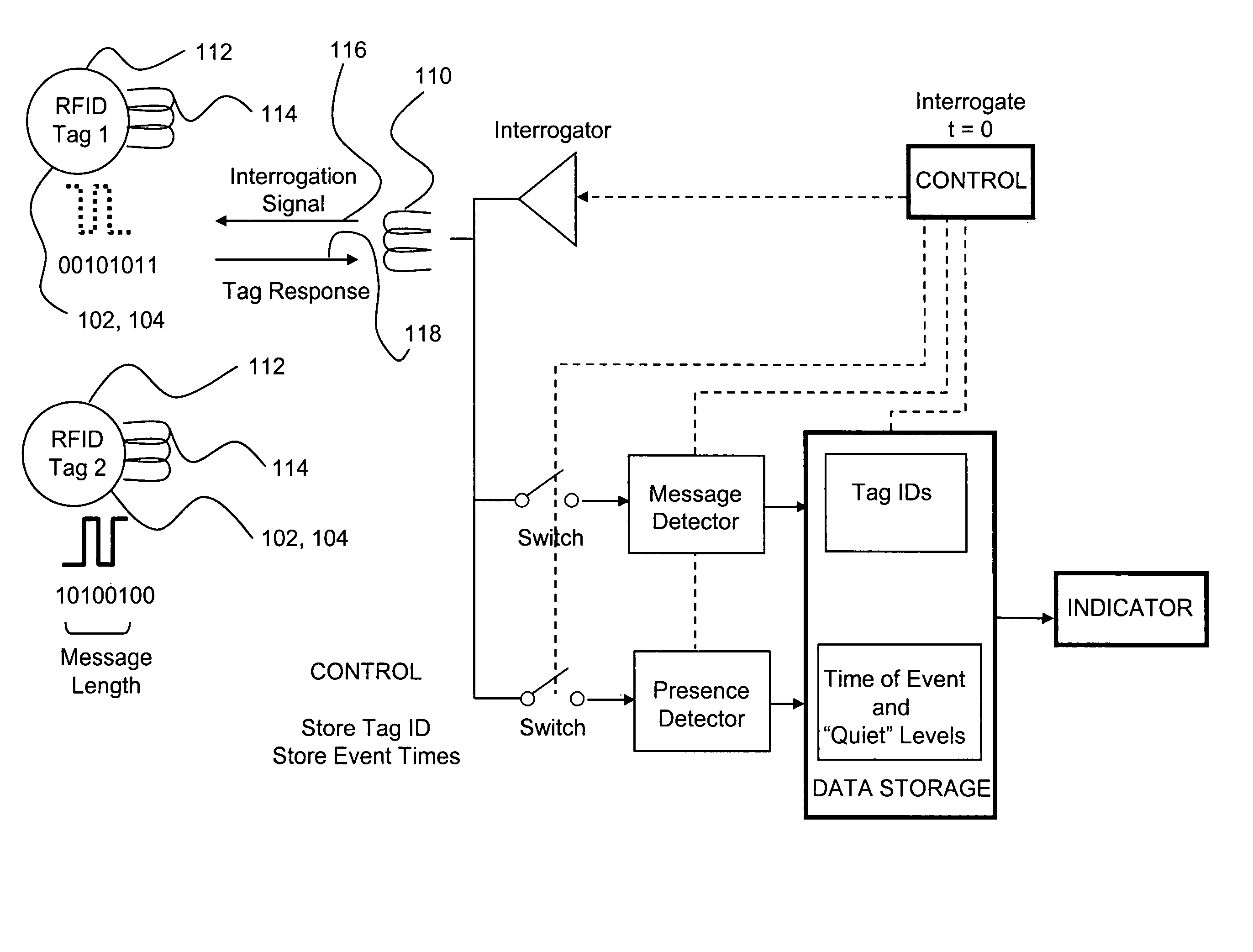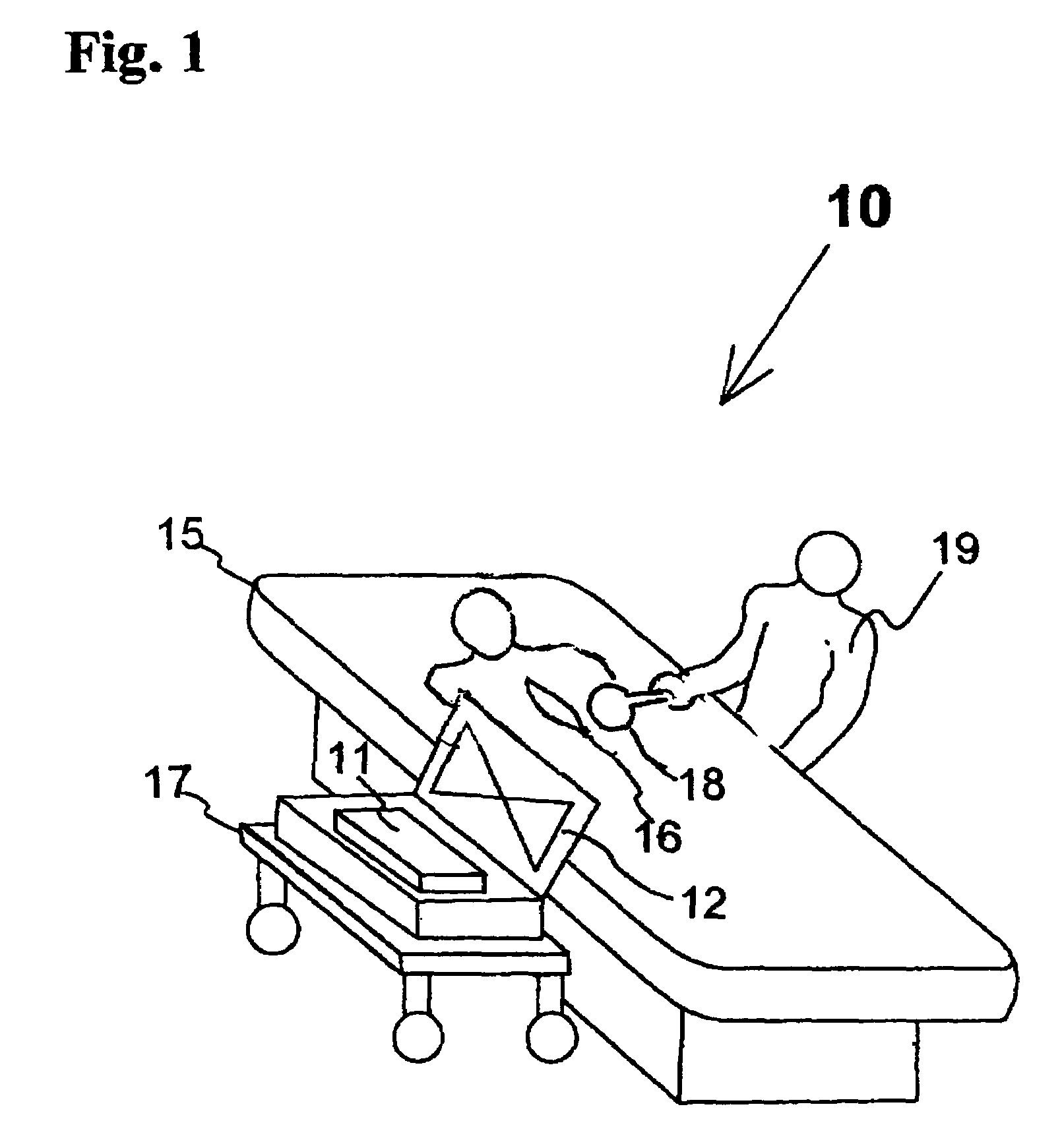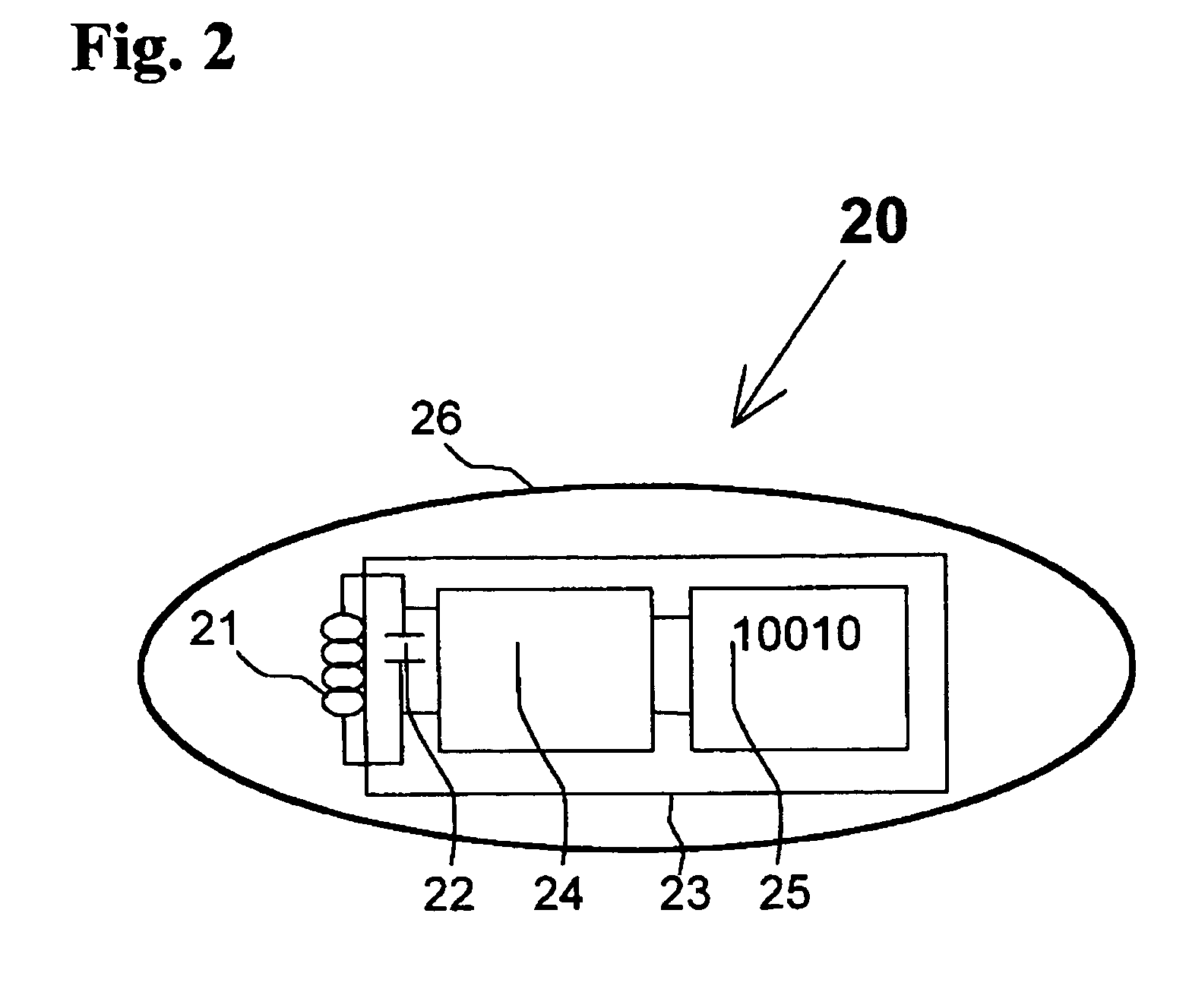Consequently, most of the higher order
microwave frequency signals are lost before any non-linear
transponder can be detected.
Inasmuch as there is no means to verify the status of the battery, this method for detection of surgical implements is vulnerable to battery failure.
Such a response does not comprise a digital code as it lacks the capacity for identifying a surgical implement.
Information is not digitally encoded and therefore the marker has no means for identifying individual counting objects.
This system does not locate sponges or surgical pads misplaced in a surgical cavity.
Further, there is no indication in the Levin application that the RFID devices are scanned during
surgery to establish the location of the
sponge or surgical pad.
The Uozumi et al. system does not detect sponges and surgical pads in a
surgical wound, since they are not expected to overlap.
The markers resonate at preselected frequencies in the form of sinusoidal
waves, but do not provide
digital data suited for identifying a
sponge or surgical pad.
However, because the sponges are not x-rayed when first put into use and because it is not possible to x-
ray the sponges when they are in the patient wound, the Ballard system is incapable of determining whether all sponges have been removed from the patient wound or whether any sponges have been left behind in the patient wound.
The system does not provide digital means for identifying a sponge or surgical pad.
The tag
signal has a predetermined frequency in the form of a sinusoidal wave, and does not carry digital information suitable for identifying
laparotomy pads or sponges retained within the wound cavity.
It is not a passive device that can be incorporated in a sponge or surgical pad due to the requirement for a reliable power source.
The frequency of
information transfer to the reader is very slow, due to the switching on and off action.
Unfortunately, RFID systems such as those used in cattle tracking suffer from several critical deficiencies that detract from their overall utility.
For example, RFID systems designed for cattle identification are understood to be limited to a range of just a few inches.
Unfortunately, in surgical applications, a greater range is required.
Another deficiency of prior art RFID systems is that they are optimized to identify one or more RFID tags which are harmless to the environment being interrogated such as in a cattle
yard, on a warehouse
pallet, or in
toll booth lane.
Unfortunately, the presence of two or more RFID tags within range of the detector generally results in a failure to acquire identification codes from any of the RFID tags due to “data collision” between the RFID tags.
In this regard, current RFID readers are generally incapable of determining the presence of multiple RFID tags within a scanned area or of determining the identification code of any one of the RFID tags in an area containing multiple RFID tags.
The above-mentioned deficiencies of current RFID readers could unfortunately mean that either two or more RFID tags are present in the area, or, that there are no RFID tags present in the area being scanned.
As such, there is currently no reliable method using conventional RFID tagging technology to verify whether or not surgical items are present after the end of an operation (i.e., prior to wound close) absent the incorporation of more expensive collision-control RFID tag technology.
Unfortunately, inadvertent retention of surgical items in the patient can result in serious complications for the patient and even death.
Another deficiency of prior art RFID systems is that the range of RFID tag detection is dependent upon the degree to which the RFID reader and the RFID tag are aligned with one another.
Unfortunately, there is no way to determine the orientation of the RFID tag which may be hidden from view in the patient wound.
Therefore, detecting a tagged surgical item may be unsuccessful if the RFID reader antenna is not optimally-oriented with respect to the unseen RFID tag.
As so noted, the ability to detect an RFID tag may be compromised due to misalignment between the RFID
tag antenna and the remote detector unit antenna.
Unfortunately, the installation of multiple RFID tags on the same surgical implement will result in data collision between the RFID tags and therefore requires that anti-collision measures be taken.
Unfortunately, this
delay in RFID tag response increases the power requirements for each RFID tag.
In a passive system, a limited amount of power is typically collected from the signal transmitted by the RFID reader (i.e., interrogator) such that a battery may be additionally required to provide power for the extended duration due to
signal delay.
In addition to the added power requirements, a further deficiency associated with anti-collision technology is that such systems are typically more costly than RFID tag systems that operate on a one-at-a-time basis because they require the tags to have read / write capability.
The increased cost of anti-collision technology in the RFID detection system may be prohibitive when the instrument or implement to which an RFID tag is attached is less expensive than the RFID tag itself.
In addition to these disadvantages encountered in the upper frequency range, further drawbacks are encountered as the Gigahertz range is approached.
As is well known in the art,
microwave ovens typically operate at this frequency to heat watery foods and can therefore potentially cause unwanted localized heating (i.e., cooking) of
body tissue by inducing rapid vibration of water molecules contained therewithin.
 Login to View More
Login to View More  Login to View More
Login to View More 


